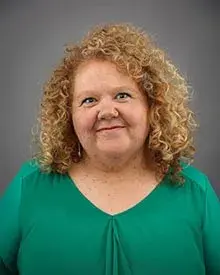The Healing Power of Creativity How Artistic Outlets Help Us Process Emotions
Life gives us moments that words can’t always fully hold. A heartbreak that lingers in the chest. Anxiety that hums under the surface. Grief that feels too big to name. We know talking is important. It can bring clarity, relief and connection. We also know that sometimes words alone aren’t enough. That’s where artistic outlets provide different outlets to process emotions.
The best part? You don’t need to be “an artist” to benefit from creative expression. With a few simple tools and a willingness to try, art can become a steady companion in your emotional well-being journey.
Why Art Helps Us Heal
1. It Gives Feelings a Safe Outlet
Big emotions can feel overwhelming when they stay inside. Creating something—whether with words, paint or movement—gives those feelings a place to go. It’s like opening a valve and letting pressure escape.
2. It Bypasses Words When They Fail
Not everything can be explained. Visual art, music and dance communicate on a different level, allowing you to express feelings that are too complicated, confusing or painful to put into sentences.
3. It Helps You Discover Meaning
Sometimes, what comes out on the page or canvas surprises us. A sketch or freewrite can reveal something you didn’t realize you were feeling, helping you better understand your inner world.
4. It Creates Connection and Belonging
Creativity doesn’t have to be solitary. Sharing your writing in a small group or joining a community art project can foster empathy, understanding and a sense of being truly seen.
Structured Tools for Hesitant Creators
For many, the hardest part is knowing where to start. Structured creative practices give you guidance and instructions, making it easier to dive in without the pressure of “freestyling.” For the last few years, my colleague Eric Wilkinson and I have facilitated creative writing workshops for employees. We invite participants to explore self through writing prompts and (voluntary!) sharing. We have seen first-hand the power of creative expression and the quick community that can form when we share. Look for more “Words Will Set You Free” creative writing workshops coming this fall!
Until then, here are a few structured practices you can check out:
A mindful drawing method using step-by-step patterns. It’s relaxing, meditative and great for easing anxiety, even for people who think they “can’t draw.”
An intuitive process of cutting out images and assembling them on cards to explore different aspects of your inner life. It’s powerful for self-discovery and processing complex feelings through visual symbolism.
Working within circular, symmetrical designs brings a sense of calm and order. You can buy mandala coloring books or create your own with a simple circle outline.
Take a newspaper or old book page and highlight or “black out” words to form a poem. This playful exercise gives structure while sparking unexpected insights.
Go for a mindful walk with a prompt such as “what feels heavy” or “signs of hope.” It shifts your perspective and helps emotions move through you visually.
Creativity as a Path to Relief and Connection
Art doesn’t ask for perfection. It asks for honesty. When you give yourself permission to create freely—whether in a structured practice like Zentangle or a quick, unfiltered journal entry—you offer your emotions a safe place to land.
And when you share those creations in a circle of others doing the same, healing often deepens. We remember that our stories, feelings and struggles are not ours alone. Art becomes the bridge between our inner world and the people who can help us hold it.
So pick up a pen, some scissors and glue or your camera phone. Let your creativity guide you toward understanding, connection and gentle relief.

